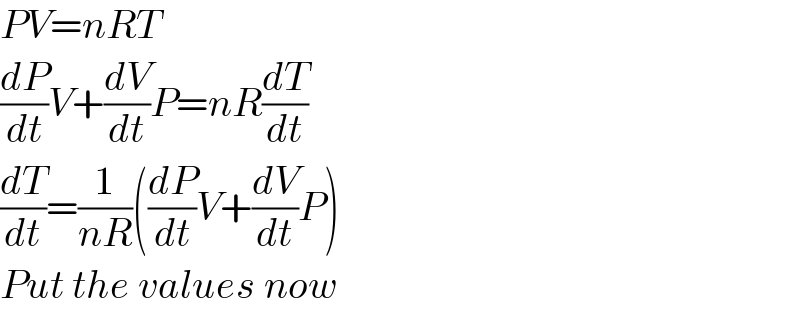
Question and Answers Forum
Question Number 139814 by help last updated on 01/May/21

Answered by physicstutes last updated on 01/May/21
![PV = nRT and P increases at a rate of 0.10 atm/min and V is decreasing at a rate of 0.15 L/min when n = 10 T = ((PV)/(nR)) ⇒ (dT/dt) = (1/(nR))(V_0 (dP/dt)+P_0 (dV/dt)) ⇒ (dT/dt) = (1/((10)(0.0281)))[(10)(0.10) +(8.0)(−0.15)] corrections please if you spot any errors](Q139855.png)
Answered by Dwaipayan Shikari last updated on 01/May/21

| ||
Question and Answers Forum | ||
Question Number 139814 by help last updated on 01/May/21 | ||
 | ||
Answered by physicstutes last updated on 01/May/21 | ||
![PV = nRT and P increases at a rate of 0.10 atm/min and V is decreasing at a rate of 0.15 L/min when n = 10 T = ((PV)/(nR)) ⇒ (dT/dt) = (1/(nR))(V_0 (dP/dt)+P_0 (dV/dt)) ⇒ (dT/dt) = (1/((10)(0.0281)))[(10)(0.10) +(8.0)(−0.15)] corrections please if you spot any errors](Q139855.png) | ||
| ||
Answered by Dwaipayan Shikari last updated on 01/May/21 | ||
 | ||
| ||